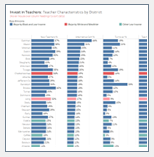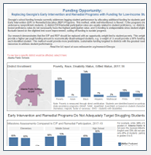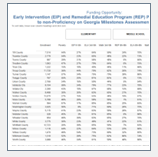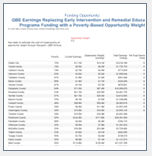Invest in Georgia Teachers:
The Need to Attract and Retain A High-Quality Workforce
December 2019
Teachers in Georgia’s public schools are unhappy about low pay and poor working conditions impacting their ability to provide a quality education to all students. A qualified teaching staff is an essential resource needed to give students a meaningful opportunity to succeed in school. Despite recent funding increases, Georgia districts are hiring new teachers without standard certification at higher rates, and more inexperienced teachers are in classrooms now than six years ago. Teachers are leaving the Georgia public schools altogether or switching to different districts in the state. Georgia’s majority Black and low-income school districts are struggling much more than other districts to hire and retain experienced teachers with standard certifications. Lawmakers must make a stable workforce of qualified teachers across the state a top priority on their public education legislative agenda. Increased funding can be targeted to teacher salaries and better benefits, teacher hiring and development, and improved school climate and school resource allocation to attract and retain quality teachers.

Teacher Profiles by District
View teacher experience, certification, salary and turnover data for each district in Georgia.

District Comparisons of Teacher Characteristics
View a sortable list of teacher characteristics (percent new, alternative certifications, turnover and average salary) by district.
Funding Opportunity: Replacing Georgia’s Early Intervention and Remedial Programs with Funding for Low-Income Students
August 2019
Georgia’s school funding formula currently provides additional funds for academically struggling students through Early Intervention (EIP) and Remedial Education Programs (REP). These programs drastically underserve the number of students who are not proficient on state assessments, and participation is inconsistent across districts. Georgia could dramatically improve the allocation of resources to non-proficient students by replacing these programs with a poverty-based opportunity weight. A formula weight that increases the per pupil allocation for low-income students would more effectively deliver resources to academically struggling students, while also giving districts the flexibility to design academic and social interventions that address students’ unique circumstances. We recommend that the Georgia Legislature 1) commission an independent cost study to determine the appropriate weight, 2) revise the funding formula to replace EIP and REP with the opportunity weight, and 3) develop an accountability framework to ensure that the funding generated is well spent.

District-Level Fact Sheet
View demographics; Early Intervention and Remedial Intervention Program participation rates compared to proficiency rates; and estimated QBE earnings using an opportunity weight.

Opportunity Weight Calculator
Simulate the impact of an opportunity weight at the state and district level.

District Early Intervention and Remedial Education Participation and Proficiency Rates
View a sortable list of district early intervention and remedial education participation rates and non-proficiency on Georgia’s Milestone assessments.

Simulated QBE Earnings by District
View a sortable list of district QBE earnings under simulated opportunity weights.